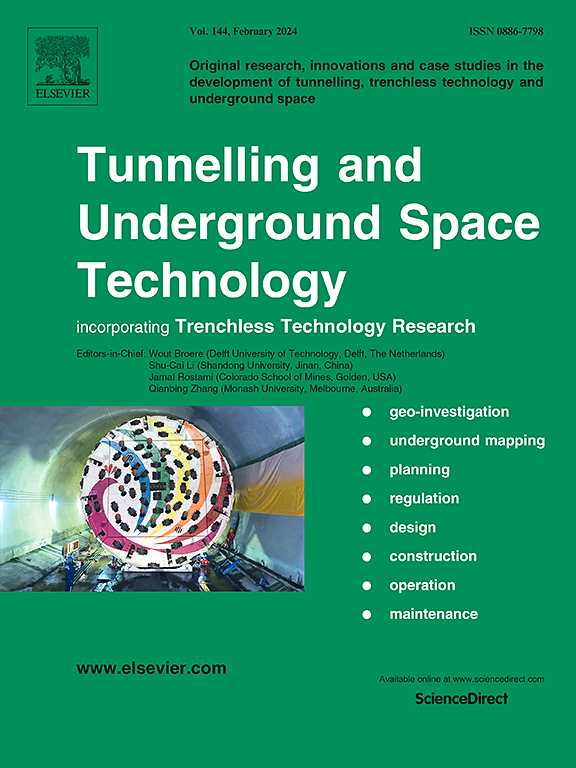Optimizing seepage control for underground powerhouse caverns near a large-scale fault
IF 6.7
1区 工程技术
Q1 CONSTRUCTION & BUILDING TECHNOLOGY
引用次数: 0
Abstract
Seepage control is a critical issue for construction of underground powerhouse caverns, especially when the caverns are located near large-scale, water-conductive faults that provide flow channels into the cavern area. Grouting and draining have been considered as the most effective measures for regulating leakage into the caverns, which usually calls for an optimization design to achieve a balance between the performance and cost. This study proposes to optimize both the location of an underground cavern system and the design parameters (depth and/or spacing) of seepage control system located near a large-scale fault by numerical simulations. A comprehensive site characterization is performed to quantify the permeability of the surrounding rocks, and the excavation-induced permeability variation is characterized with a strain-dependent model. The groundwater flow is described by a steady-state flow model with unilateral boundary condition for rigorous simulation of drains. It is found that both the location of caverns and the layout of grout curtains and drains can be effectively optimized in terms of the metrics including the pore water pressure distribution, the discharge into the cavern area, and the stability of fault against seepage erosion. This work underscores the importance of optimization design in regulating the groundwater flow around underground caverns located near permeable faults.
求助全文
约1分钟内获得全文
求助全文
来源期刊

Tunnelling and Underground Space Technology
工程技术-工程:土木
CiteScore
11.90
自引率
18.80%
发文量
454
审稿时长
10.8 months
期刊介绍:
Tunnelling and Underground Space Technology is an international journal which publishes authoritative articles encompassing the development of innovative uses of underground space and the results of high quality research into improved, more cost-effective techniques for the planning, geo-investigation, design, construction, operation and maintenance of underground and earth-sheltered structures. The journal provides an effective vehicle for the improved worldwide exchange of information on developments in underground technology - and the experience gained from its use - and is strongly committed to publishing papers on the interdisciplinary aspects of creating, planning, and regulating underground space.
 求助内容:
求助内容: 应助结果提醒方式:
应助结果提醒方式:


